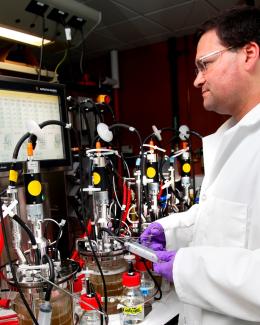Abstract
Microbial Electrolysis Cells (MECs) are often documented for their ability to produce hydrogen through new sources and new configurations. However, few studies attempt to document the recovery of the bioanode after being exposed to operational failure conditions. This study attempted to compare the behavior and recovery of MECs after being exposed to four operational failure conditions: acidification, aeration, osmotic shock, and voltage reversal. For each failure condition, three time points were tested: before failure, immediately after failure, and after recovery efforts. Of the modes tested, acidification caused the largest loss in performance and operational efficiency, while osmotic shock caused the second largest loss in performance. Aeration and voltage reversal caused negligible losses in performance immediately after failure conditions and after the recovery period. Aeration and voltage reversal had a minimal effect on the removal of individual compounds. However, acetate accumulated after acidification, and propionic acid accumulated after osmotic shock. These findings could be useful for determining if failure will require more significant repair efforts in commercially deployed devices. While acidification created permanent losses to performance, if device failures like aeration, osmotic shock, and voltage reversal are caught early (less than 15 min), full recovery without bioanode replacement is likely.


